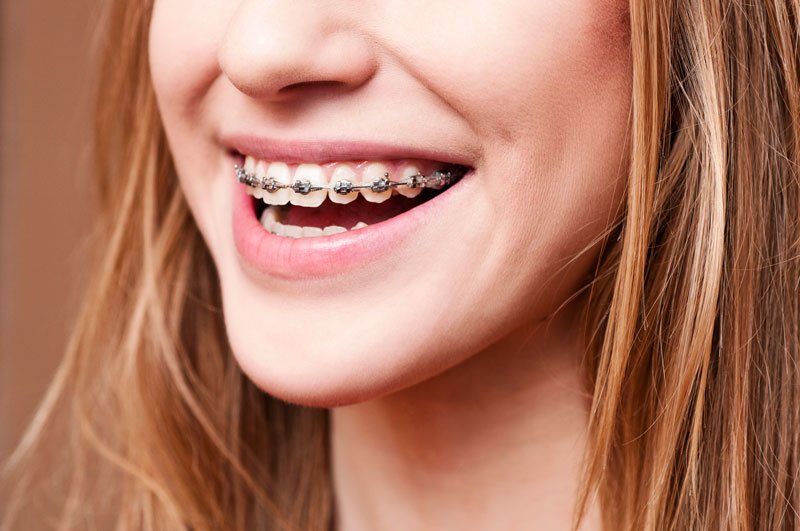Comprehensive Overview to Orthodontics Treatments for Correcting Dental Misalignments
Recognizing the intricacies of each procedure, including their mechanisms, benefits, and possible downsides, is critical in making educated decisions concerning one's orthodontic therapy. As we navigate with the comprehensive overview to orthodontic treatments for remedying oral misalignments, the intricate details of each approach will unfold, shedding light on the course towards a practical and unified oral placement.
Orthodontic Procedures Introduction

Normal changes and surveillance are important components of orthodontic therapy to guarantee progression is on track and to make any necessary alterations along the way. By going through orthodontic procedures, patients can not only attain a straighter grin yet also enhance their total oral health and function.
Conventional Dental Braces: How They Work
When thinking about orthodontic therapies for oral misalignments, standard braces stick out as a time-tested method for dealing with teeth positioning. Conventional braces are composed of braces, wires, and bands that work together to apply constant pressure on the teeth, gradually moving them into the preferred positioning. The brackets are attached to the teeth utilizing an unique adhesive, and the wires are threaded via the braces. By adjusting the stress of the cords, orthodontists can regulate the direction and pressure put on each tooth, leading them into correct placement with time.
As stress is applied to the teeth with the dental braces, the bone bordering the teeth is reshaped to sustain the new tooth settings. People will certainly require normal modifications at the orthodontist's office to make certain the braces continue to apply the correct pressure for efficient teeth motion.
Unseen Aligners: Disadvantages and pros
These clear, customized trays are essentially invisible when worn, making them an enticing choice for individuals looking for a more visually pleasing orthodontic therapy. Clients can eliminate the aligners prior to eating or cleaning their teeth, minimizing the threat of food getting stuck in the device and streamlining the cleaning procedure.

Surgical Orthodontic Options
Surgical interventions in orthodontics present practical choices for resolving complicated dental imbalances that may not be properly settled with conventional orthodontic treatments. While unseen aligners and traditional braces can correct numerous orthodontic problems, certain cases call for surgical intervention to accomplish optimum outcomes. Surgical orthodontic choices are usually recommended for severe malocclusions, considerable jaw inconsistencies, and instances where the underlying bone framework requires modification to attain appropriate positioning.
One usual medical orthodontic procedure is orthognathic surgical treatment, which involves repositioning the jaws to correct useful problems such as trouble speaking or chewing. This surgical treatment is usually executed in cooperation with an orthodontist that aids straighten the teeth prior to and after the procedure. Surgical orthodontics might additionally involve treatments to subject affected teeth, eliminate excess periodontal tissue, or improve the jawbone to produce a much more unified face profile.
Prior to thinking about medical orthodontic alternatives, people undergo a thorough analysis to figure out the necessity and prospective advantages of such treatments. orthodontist. While surgery may appear complicated, it can considerably enhance both the feature and aesthetics of the smile in instances where standard orthodontic therapies fail
Retainers and Post-Treatment Care

Post-treatment treatment includes following the orthodontist's guidelines carefully. This might consist of proper oral health methods, attending follow-up consultations, and using the retainers as suggested. Failure to follow post-treatment treatment guidelines can cause relapse, where the teeth slowly relocate back in the direction of their initial positions. Regular retainer wear, great oral health, and normal oral exams are vital for maintaining the outcomes achieved via orthodontic surgery and making certain the long-term stability of the dealt with oral alignment.
Verdict
In conclusion, orthodontic treatments supply different alternatives for fixing oral misalignments. Surgical orthodontic choices are readily available for a lot more extreme misalignments. In general, orthodontic treatments can efficiently enhance oral wellness and aesthetic look.
As we navigate with the thorough overview to orthodontic procedures for fixing dental misalignments, the detailed information of each approach will certainly unfold, dropping light on the course towards a unified and useful dental placement. - cumming aligners
One of the most common orthodontic therapies is the use of braces, which consist of steel brackets and cords that apply mild stress to slowly move teeth into the preferred placement.When thinking about orthodontic therapies for dental misalignments, conventional dental braces stand out as a time-tested method for fixing teeth positioning. Furthermore, unseen aligners may not be suitable for intricate orthodontic problems that call for even more considerable teeth activity, as they are typically suggested for mild to modest instances. Retainers are custom-made orthodontic gadgets created to hold teeth in their corrected settings after the conclusion of orthodontic therapy.